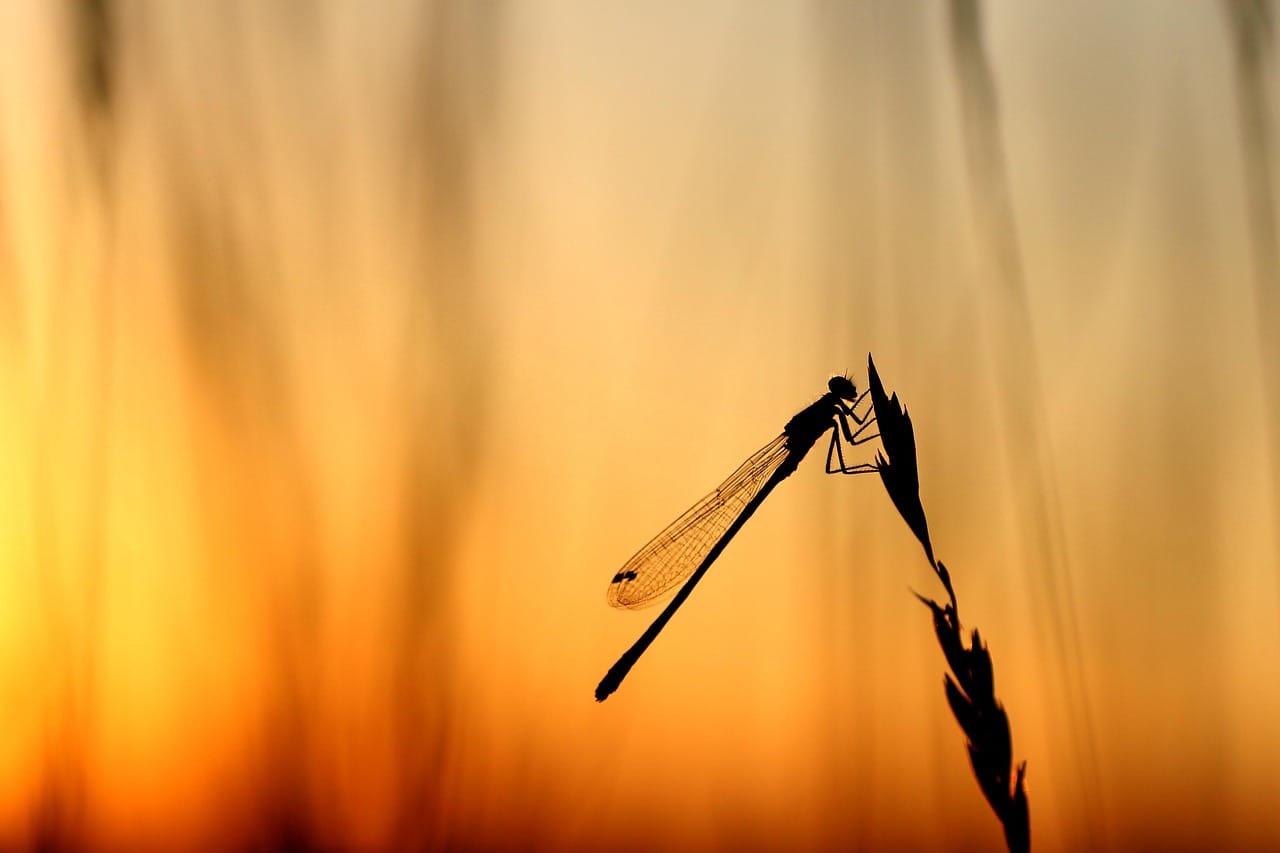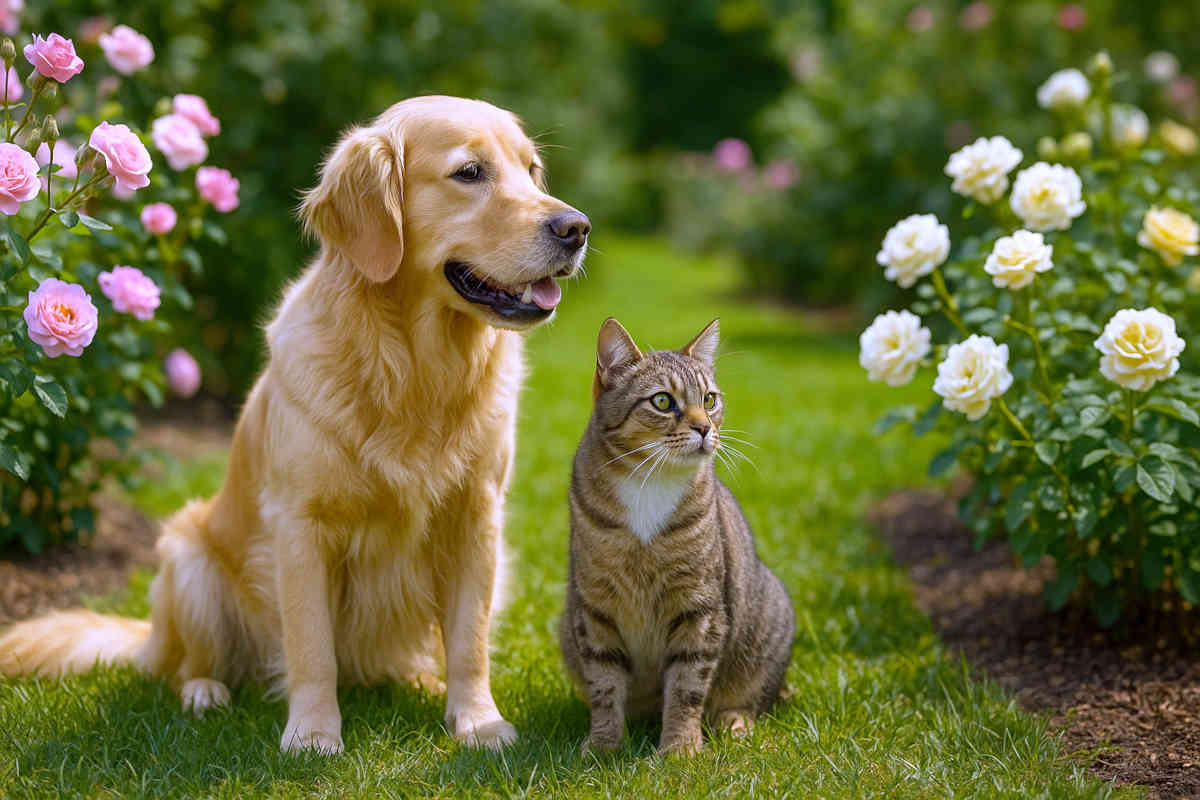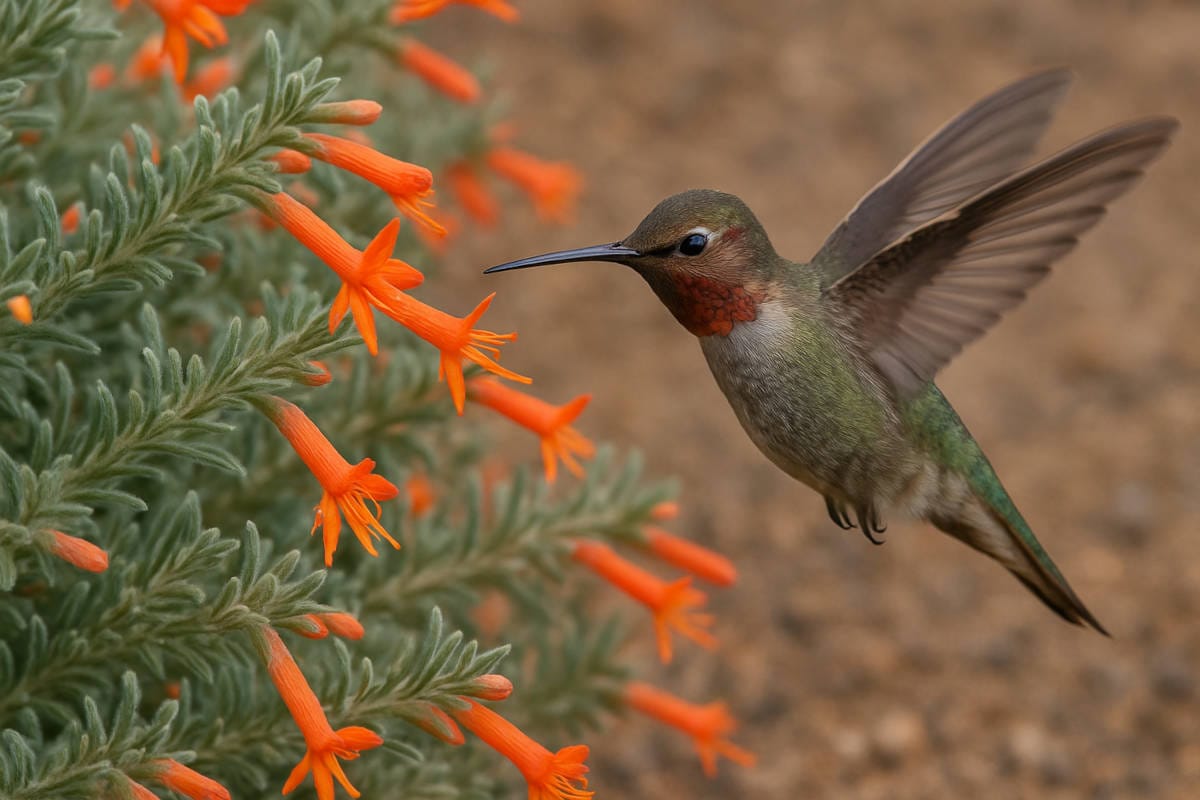You’ve got mosquitoes buzzing in your garden, and bug spray’s not exactly your favorite scent? There’s a better way, and it looks a lot cooler. Let’s talk about plants that attract dragonflies.
Dragonflies are mosquito hunters. They can eat hundreds of flying pests a day, and guess what? You can actually invite them into your yard by planting the right stuff.
In this guide, we’ll walk you through everything you need to know about this topic, including why dragonflies are amazing garden allies, what kind of environment they need, and a list of specific plants they love (including some you probably already know). We’ll also throw in a few tips on how to set up your space so they’ll want to stick around.
Ready to turn your backyard into a bug-fighting, dragonfly-friendly haven? Let’s get into it.
Why Attract Dragonflies to Your Garden?
Most people don’t think about dragonflies when they’re planting flowers or building a pond. But once you know what they bring to the table, it’s hard not to want them around.
First off, dragonflies are pest control pros. They feed on mosquitoes, gnats, midges, flies — basically the bugs that annoy you the most.
And they’re efficient: a single adult dragonfly can eat dozens of mosquitoes in a day. Their babies (called nymphs) are just as fierce — they live in water and munch on mosquito larvae, keeping the next generation of biters in check.
But there’s more. Dragonflies also help create balance in your garden’s little ecosystem.
They’re part of the food chain, sure — birds, frogs, and even bigger insects may go after them — but their presence signals a healthy, biodiverse environment. That’s especially true if you’re aiming for a pollinator garden or a more natural landscape.
And yeah, they’re beautiful. There’s something almost futuristic about the way they hover and dart around. Some have shimmering wings, others glow with electric blues or greens. When they show up, your garden instantly feels more alive.
So, if you’re trying to keep things organic, reduce pesticide use, or just enjoy your backyard without swatting every five seconds, dragonflies are your friends.
You may also like:
- How to Protect Plants from Frost: 6 Proven Methods for a Healthy Garden
- Tomato Plant Leaves Turning Yellow? 7 Causes and Easy Fixes
Key Conditions Dragonflies Need to Thrive
If you want dragonflies to hang out in your garden, you’ve gotta give them a reason to stay. And nope, planting a few flowers won’t cut it if the rest of the setup doesn’t meet their needs.
Water is the big one. Dragonflies lay their eggs in or near water, and their nymphs live underwater for months (sometimes even years) before they become adults.
So if you’ve got a pond, a small fountain, or even a water-filled barrel with the right plants, you’re already on the right track. Still water works best, but make sure it’s not totally stagnant. A little movement helps oxygenate the space and keep things clean.
Sunlight is just as important. Dragonflies are solar-powered, in a way. They need sunny spots to warm up in the morning and to hunt throughout the day. If your garden’s mostly shady, try opening up a section where they can bask.
Plants matter, too — and not just for food. Dragonflies use tall stems and sturdy leaves to perch, rest, and even scope out prey. Dense plantings near water give nymphs cover while they grow, and adults use those same plants for shelter when it’s windy or rainy.
Oh, and here’s something critical: skip the pesticides. Dragonflies are sensitive to chemicals, and anything that wipes out the bugs they eat — or poisons the water — will drive them away fast. Stick to natural pest control methods, especially if you’re creating a wildlife-friendly space.
Creating the right conditions isn’t complicated, but it does require some intention. Once you’ve got water, sun, and the right mix of plants, you’re well on your way to building a dragonfly haven.
You may also like:
- Hummingbird Carpet Plant: Everything You Need to Know to Grow It
- The Spider Plants Guide: Benefits, Planting, and Maintenance
Top 7 Plants That Attract Dragonflies
Dragonflies aren’t too picky, but some plants definitely do a better job of drawing them in. What you want is a mix of aquatic plants, flowering perennials, and native species that either attract the insects dragonflies eat — or give them shelter and breeding space.
Here are some of the best options to try.
1. Pickerelweed (Pontederia cordata)


This plant’s a dragonfly favorite — and for good reason. Pickerelweed grows right at the edge of ponds or in shallow water, where dragonflies like to lay eggs. It puts out spikes of purple-blue flowers that bloom through summer, attracting small flying insects… which dragonflies love to snack on.
It’s also a native plant in many parts of North America, so it’s hardy and easy to grow. Just give it partial to full sun and keep its roots submerged.
2. Arrowhead (Sagittaria latifolia)


Also called duck potato, arrowhead thrives in shallow wetlands or along the edges of water features. Its arrow-shaped leaves offer excellent cover for dragonfly nymphs underwater, and its bright white flowers draw in all kinds of pollinators.
It spreads fast in the right conditions, so it’s ideal for natural-style gardens, especially if you’re building a mini habitat.
3. Water Lilies (Nymphaea spp.)
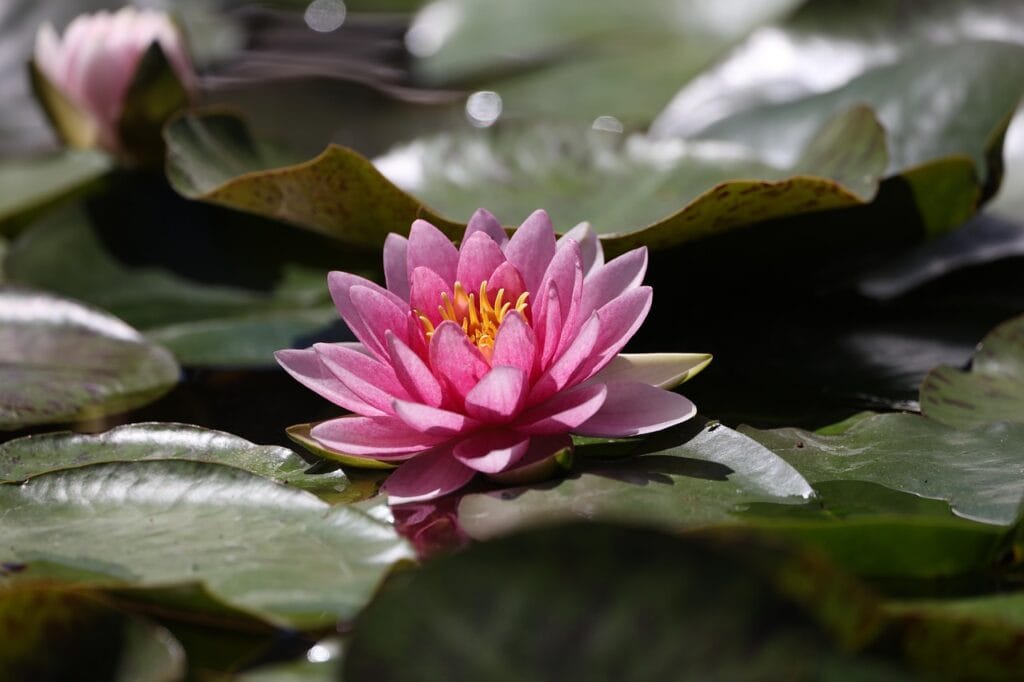

These floating beauties don’t just make your pond look amazing — they’re super useful for dragonflies, too. Adult dragonflies often land on lily pads to rest or hunt, and the shade from the pads keeps the water cooler, which helps the nymphs below.
Choose hardy varieties suited to your climate, and make sure they get at least 4–6 hours of sun daily.
4. Joe-Pye Weed (Eutrochium purpureum)
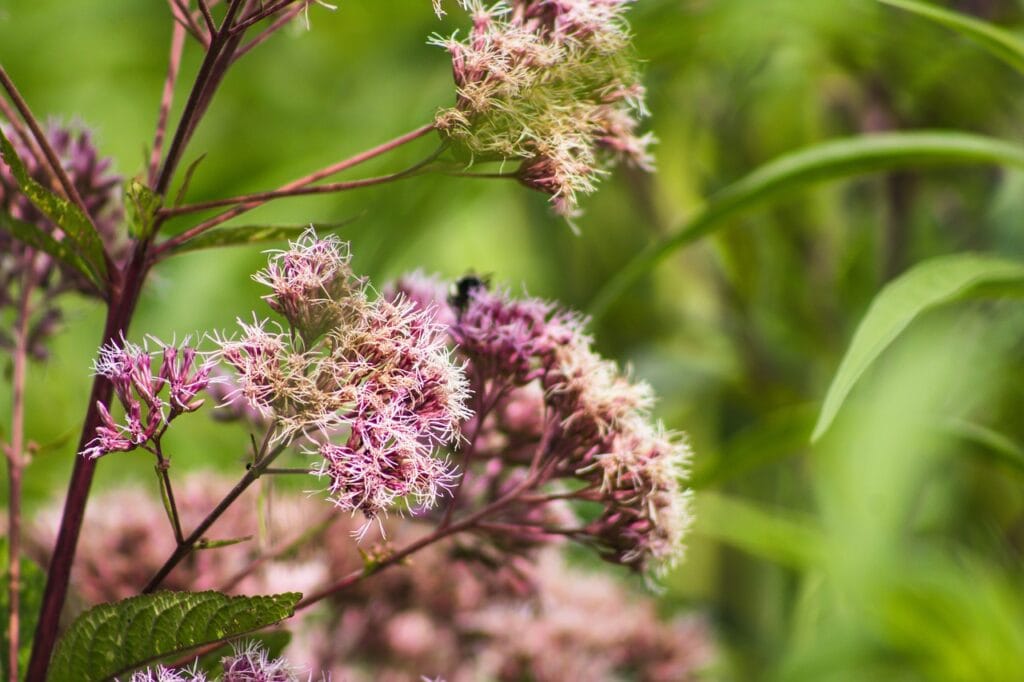

If you want something that blooms tall and draws in flying insects like a magnet, plant Joe-Pye weed. It’s native to much of the U.S., thrives in moist soil, and puts out huge clusters of soft pink flowers in late summer — just when adult dragonflies are at their peak.
You’ll see butterflies and bees around it, too, which makes your garden even more lively.
5. Black-Eyed Susan (Rudbeckia hirta)
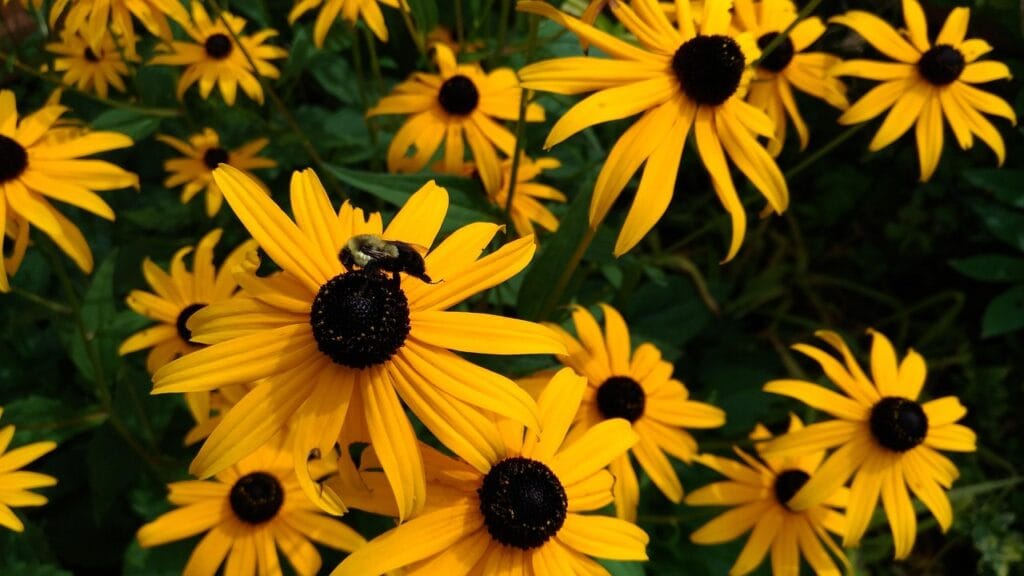

This cheerful wildflower isn’t just eye candy. Black-eyed Susans attract tons of small insects, which dragonflies actively hunt. They’re drought-tolerant, low-maintenance, and bloom for weeks, making them a great option for sunny borders.
Add a few near a pond or birdbath and you’ll likely see dragonflies zipping by in no time.
6. Meadow Sage (Salvia nemorosa)


Meadow sage is a compact, clump-forming perennial with tall purple-blue flower spikes. It brings in bees, butterflies, and other small pollinators — all potential meals for dragonflies.
Plant it in full sun, give it decent drainage, and it’ll come back year after year with minimal fuss.
7. Swamp Milkweed (Asclepias incarnata)
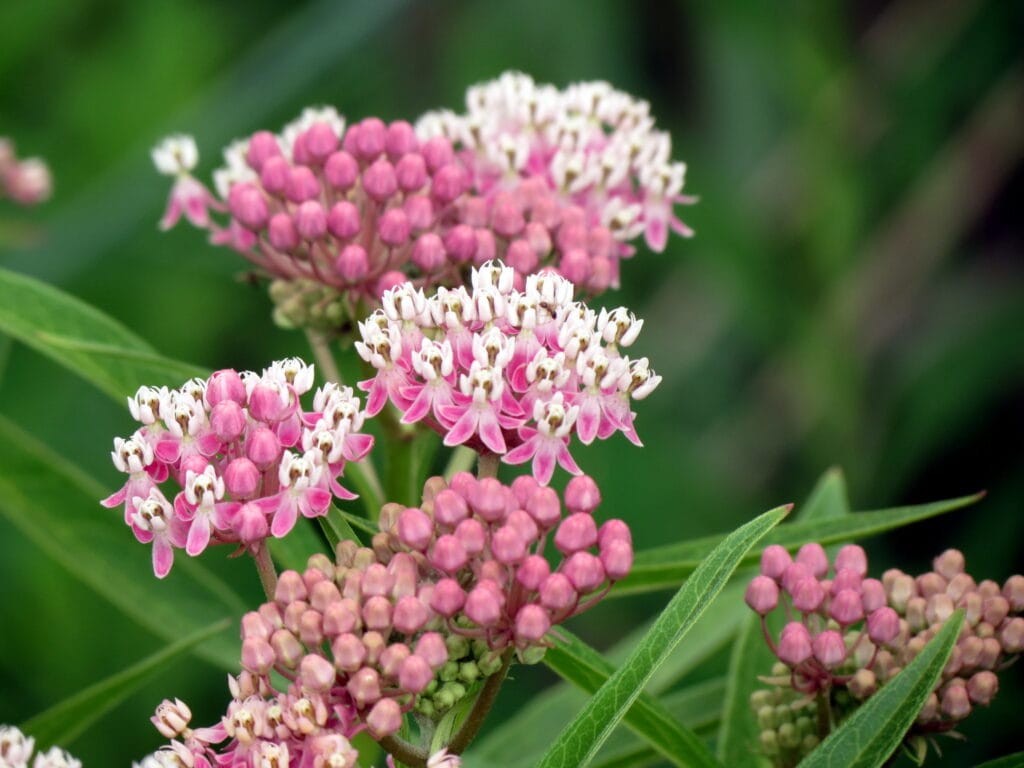

Unlike common milkweed, this variety loves wet soil — perfect for planting near ponds or damp garden edges. It supports monarch butterflies, yes, but it’s also great for attracting dragonflies thanks to the insect traffic it brings.
It blooms in midsummer and into fall, offering long-term value in a pollinator-friendly space.
You may also like:
- Iris Flower Care 101: How to Grow Stunning Irises in Your Garden
- Dragon Tail Plant Guide: How to Grow Epipremnum Pinnatum
How to Design a Dragonfly-Friendly Garden
Planting the right stuff is a solid start. But if you really want dragonflies to stick around, you’ve gotta think about how your garden works as a whole.
First thing: water placement matters. If you’re using a pond, birdbath, or container fountain, place it in a sunny spot and surround it with a mix of tall and low plants. Dragonflies use taller stems to perch and scan for prey, while shorter plants help shelter nymphs and other insects.
Now, don’t stress about building a fancy pond. Even a large basin sunk into the ground can work — just make sure it’s at least 6–12 inches deep, with sloped sides so wildlife can climb out.
Add native aquatic plants like pickerelweed or arrowhead and avoid using pumps that create strong currents. Dragonflies prefer calm water for laying eggs.
Keep your layout layered. Mix upright flowers like Joe-Pye weed with medium-height options like swamp milkweed, and toss in some ground cover if you’ve got the space. This variety gives adult dragonflies more perching options and makes the whole area more inviting to the insects they hunt.
And here’s a big one: no pesticides. Seriously. Even “natural” ones can mess with the balance you’re trying to create. If you’ve got pest issues, try companion planting or physical barriers first.
Want to go the extra mile? Skip the lawn — or at least shrink it. Lawns don’t offer much for wildlife. Swap a patch of turf for native wildflowers or create a mini wetland edge using mulch and moisture-loving plants.
Designing a dragonfly-friendly garden is about creating the kind of space where nature wants to hang out — and where you actually enjoy being, too.
You may also like:
- Gladiola Flower Guide: How to Grow and Care for Gladiolus in Your Garden
- Planter Pool Landscaping: 5 Gorgeous Designs + Maintenance Guide
Plants to Avoid (That May Deter Dragonflies)
Not all plants play nice in a dragonfly-friendly space. Some don’t directly repel dragonflies, but they can throw off the balance of your garden — and that’s enough to make these winged predators disappear.
1. Invasive species
Plants like purple loosestrife or giant reed grass might look pretty, but they’re aggressive. They outcompete native plants, take over wetlands, and reduce the diversity of insects that dragonflies rely on for food. If a plant spreads fast and takes up space where other things should be growing, it’s probably not helping.
2. Anything sprayed with pesticides
This one’s huge. If you’re using chemicals on your lawn, flowers, or shrubs, you’re not just killing pests, you’re killing the prey dragonflies eat and potentially contaminating the water where they breed. Even so-called “safe” sprays can be harmful. If you’re committed to bringing in dragonflies, skip the sprays completely.
3. Plants that don’t support insect life
Ever notice how some hybrid plants have no scent or pollen? They may look good, but they’re not pulling their weight in your garden’s ecosystem. Dragonflies don’t eat nectar, but they follow the bugs that do, so if your plants aren’t drawing in pollinators, dragonflies won’t see a reason to stick around.
What to do instead
Stick to native, nectar-rich plants. Choose varieties that thrive in your region’s climate. Go for diversity instead of monoculture. The more balanced and lively your garden is, the more likely dragonflies (and other helpful critters) will be part of the scene.
You may also like:
- How to Grow Garden Sage at Home: Tips for Lush, Flavorful Plants
- How to Grow Kale: A Step-by-Step Guide for Healthy, Homegrown Greens
Conclusion
So, what are the best plants that attract dragonflies? Think wetland natives like pickerelweed, arrowhead, and swamp milkweed — plus flower-packed favorites like Joe-Pye weed and black-eyed Susan.
These plants support the insects dragonflies eat, offer places to rest, and help create the kind of healthy, balanced garden they’ll keep coming back to.
The key is about building a space that actually works for them. Water, sun, shelter, and no pesticides — get those right, and the dragonflies will show up.
And when they do? Fewer mosquitoes, more movement, and a garden that feels alive. Pretty good tradeoff for planting a few flowers, right?
If you’re building a space that attracts dragonflies, why not bring in something totally stunning while you’re at it? Check out our complete guide on how to grow and care for orchids — a perfect way to add elegance and color to your garden or indoor setup. Orchids might seem tricky at first, but with the right tips, they’re surprisingly doable (and addictive).
Read the full orchid care guide now.
FAQ – Plants That Attract Dragonflies
1. Do dragonflies really help control mosquitoes?
Yes. Dragonflies eat both adult mosquitoes and larvae. A single dragonfly can consume dozens of mosquitoes in a day.
2. Do I need a pond to attract dragonflies?
It helps, but it’s not required. Even a small water feature like a shallow fountain or container pond can do the trick if it’s placed well and surrounded by the right plants.
3. What kind of plants do dragonflies like?
They prefer a mix of aquatic plants (like water lilies and arrowhead) and flowering natives (like Joe-Pye weed and black-eyed Susan) that attract small insects.
4. Can I use pesticides and still attract dragonflies?
Not really. Pesticides harm dragonflies directly and also kill off the insects they eat. Avoiding chemical treatments is key to keeping them around.
5. Are dragonflies safe for my garden?
Absolutely. They don’t damage plants and actually help reduce pests. They’re one of the most garden-friendly insects you can attract.
6. Will dragonflies stay all year?
Nope. Most adult dragonflies are seasonal. But if your garden stays inviting, especially with water and native plants, they’ll come back each year.


